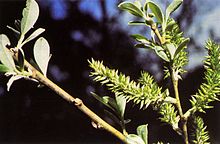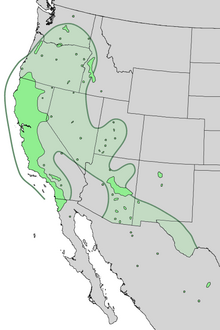Salix lasiolepis
| Salix lasiolepis | |
|---|---|
 |
|
| Scientific classification | |
| Kingdom: | Plantae |
| (unranked): | Angiosperms |
| (unranked): | Eudicots |
| (unranked): | Rosids |
| Order: | Malpighiales |
| Family: | Salicaceae |
| Genus: | Salix |
| Species: | S. lasiolepis |
| Binomial name | |
|
Salix lasiolepis Benth. |
|
 |
|
| Natural range | |
Salix lasiolepis (arroyo willow) is a species of willow native to western North America.
The core range of the arroyo willow includes most of California, including the California Coast Ranges, Arizona, Klamath Mountains, Peninsular Ranges, Sierra Nevada, and Transverse Ranges. It extends north into Washington, south into Baja California, and east into Idaho, Utah, Texas, and Coahuila (México).
The plant is commonly found growing in riparian zones in canyons and valleys, along pond shores, and in marshes and wetlands. It is found in many plant communities, including: chaparral, oak woodland, mixed evergreen forest, coast redwood forest, yellow pine forest, red fir forest, lodgepole pine forest, and grasslands.
Salix lasiolepis is a deciduous large shrub or small multi−trunked tree growing to 10 m (33 ft) tall. The shoots are yellowish brown and densely hairy when young. The leaves are 3.5–12.5 cm long and broadly lanceolate in shape. They are green above and glaucous green below. The undersides are covered with whitish or rusty hairs which gradually wear off during the summer.
...
Wikipedia

